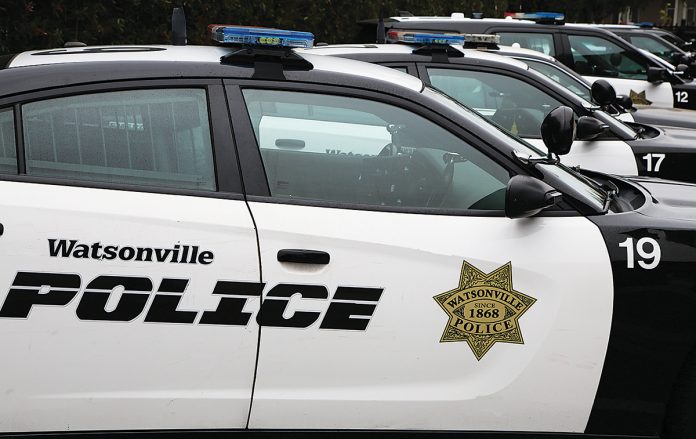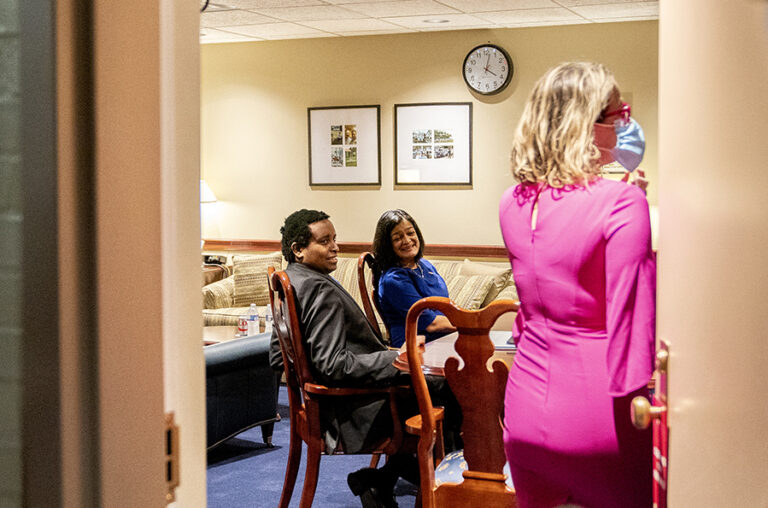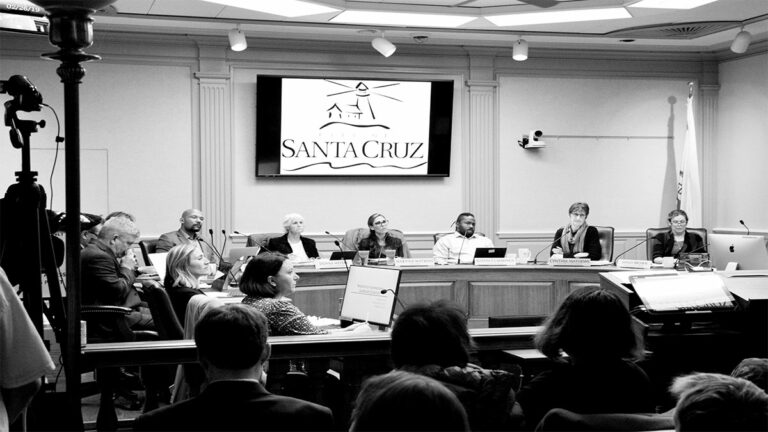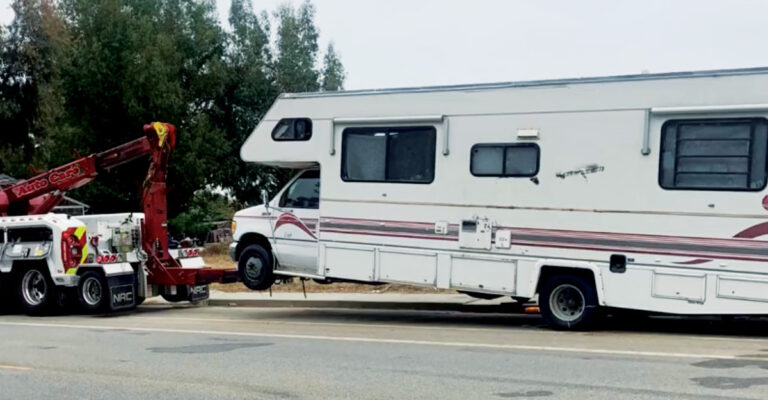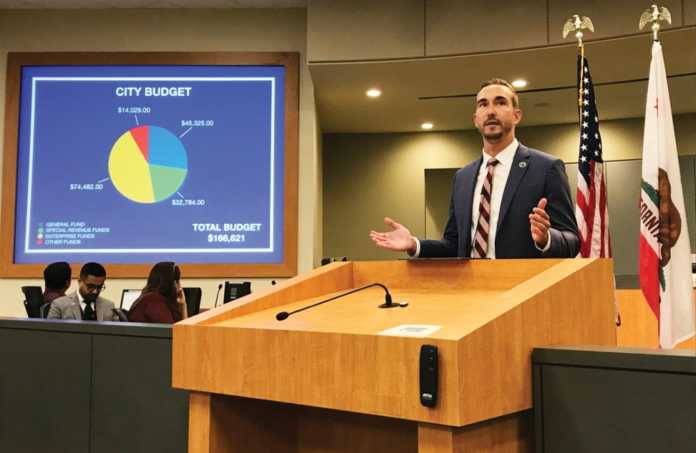It scrounged-up curtains from Broadway. It sourced seating that originally came from the Bellagio in Las Vegas. And now, the Scotts Valley Community Theater Guild is nearing completion of a performing arts center at the site of the old roller rink.
It’s taken about $80,000 of concrete work and uncounted hours of volunteer sweat equity to get to this point, according to Guild board member Trish Melehan.
“It’s going to be a cultural hub of the city,” the 70-year-old local arts commissioner of 15 years said, noting their space can accommodate ballet, choral groups and bands with large followings. “We’re going to have seating for up to 500 people.”
And while the group is aiming for a soft-opening social in December, and much of the seismic retrofitting is now visible on the shell of the structure, it’s been a long journey to get here, Melehan explains.
“Our mission was to raise funds to create a performing arts space in Scotts Valley,” she said, noting local groups used to use the theater at Bethany University until it closed in 2011. “Bethany sort of went defunct and they sold to 1440 Multiversity. So that venue was not available anymore.”
When the City purchased the old roller rink building for a new library, it had to figure out what to do with the other half of the building.
“There were various proposals,” Melehan says, looking back to the community discussions around the facility’s future. “The most prominent voices were those that said we need a performing arts center.”
She remembers what it was like to step inside for the first time.
“There was all kinds of stuff in there,” she said, recalling the sunken floor, the kitchen and little cubby holes. “All that had been done was a wall had been put up to separate it from the library.”
In the end, the Guild had to demolish everything and start from scratch.
Over the years the group drummed up several thousand dollars from local arts boosters. That included a $50,000 grant and a $30,000 anonymous donation.
“We’ve raised a lot but it’s taken a long time,” she said, adding they had to assure Council at one point they were still serious about completing the center. “About two years ago they made us sign an official lease.”
The Guild got an architect to put designs together pro bono.
City officials confirmed the group successfully pulled some building permits, although it noted they are currently in the process of renegotiating a new lease.
Board members had high hopes they might attract a generous corporate backer or philanthropist to take up their cause, to turn the space into, say, the “Netflix Center for the Performing Arts.” But that never came to pass.
So, although the group had a relatively grandiose vision at the outset, it’s now proposing a phased roll-out where they would start in a more modest set-up, then improve things over time.
“We decided we had to get more realistic,” Melehan said, noting they’ve rejigged plans to be more flexible for groups that may want to rent the facility. “Everything is portable.”
According to Melehan, after the City allowed a developer to build in Santas Village, and forewent a performing arts center there, it got a million-dollar payout—and promised the Guild around $95,000 towards the Guild’s plans.
“It’s one of the hurdles we had to cross to where we are today,” she said, adding local officials didn’t seem to have faith they could actually manifest the performing arts space. “The City never wanted to give us the money.”
City officials told the group its dream would come with a $2 million price tag (which later ballooned to $4 million), she added.
“They were right about that,” she said, adding they gave the group a couple of years to figure something out. “We modified our plans for a permit.”
Since then, the Guild has been busy as bees banging out all the work that needs to be done to bring Shakespeare, along with more contemporary shows, to Scotts Valley.
Meanwhile, the City is completely overhauling the library space next door, which is expected to include a façade upgrade covering the exterior of the future performance arts venue.
That facility improvement is expected to be completed by next spring.
On the performing arts side, renovations have included moving a door, putting in fire sprinklers and ripping out an old restroom.
The entire layout can be reconfigured at will, making it a great venue for professional presentations, school groups and community gatherings, according to the Guild.
Melehan wonders if maybe they should’ve left the toilets in place, because now one obstacle to opening is figuring out how people can relieve themselves at intermission.
“We’ve had quite a bit of money in the bank, but we’ve been spending it down,” she said, adding they’re doing more fundraising, but would love to see the City pitch in the promised money. “That would be a huge boon to us.”
When asked about the funding arrangement by the Press Banner, the City confirmed it’s agreed to give the group an unspecified amount of money for the performing arts center, but says it’s holding the cash until they see more specifics.
“We want to see what the concept is and how they’d use that money,” said Administrative Services Director Casey Estorga. “We want to support this project.”
Melehan says they’re considering (upscale) porta-potties as a temporary solution to the bathroom issue, and reveals the Guild has been in talks with the high school drama department for a scaled-down Nutcracker performance in December.
Scotts Valley’s Public Works Director Chris Lamm said the City might be more likely to pay the money it owes if the Guild comes up with a long-term solution, instead of just a temporary one.
“From a building-occupancy standpoint, a building has to have restrooms,” Lamm said, confirming portable toilets could satisfy this rule, for a little while anyway. “The City would definitely be looking for something more permanent for the project completion.”










